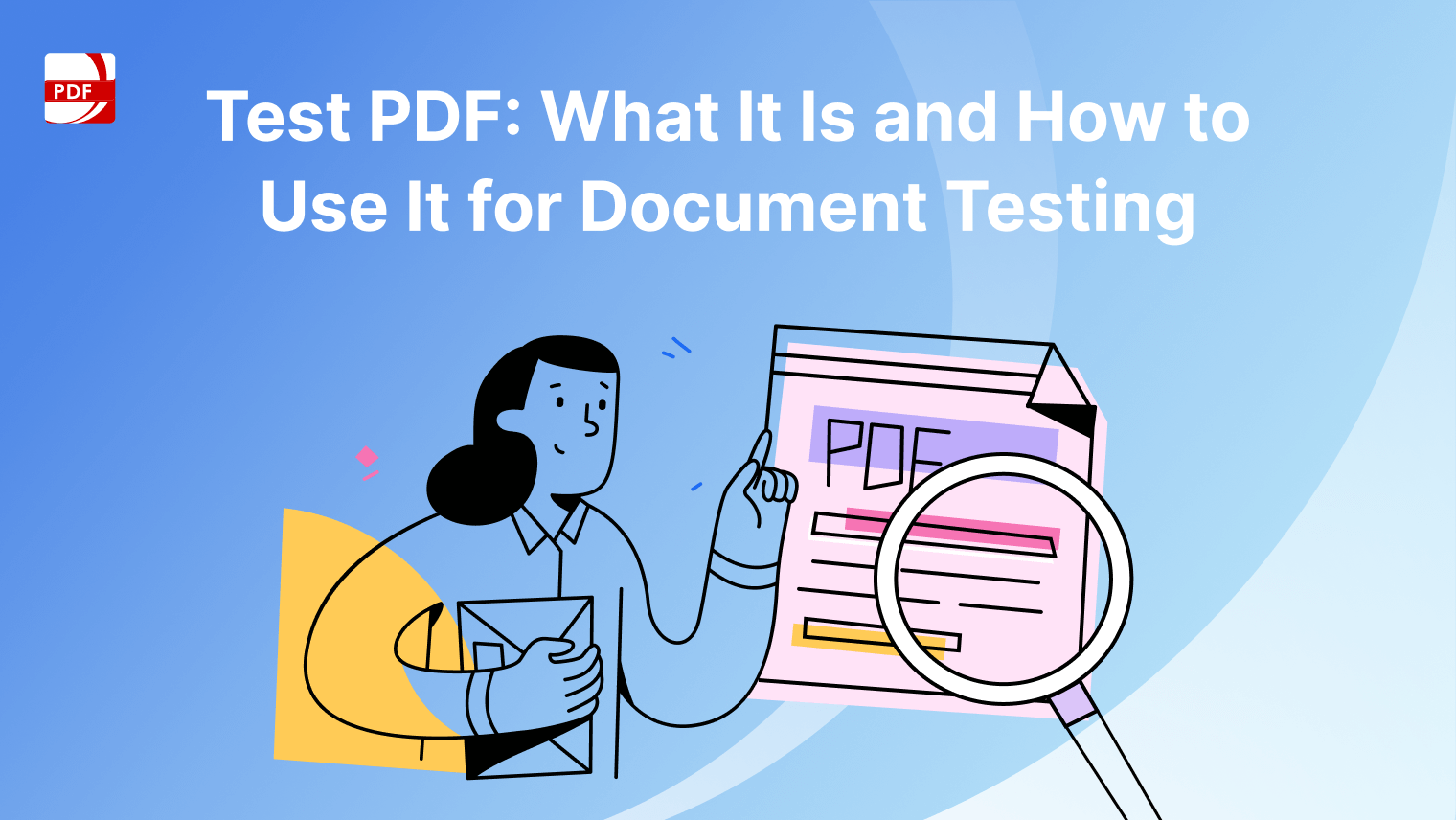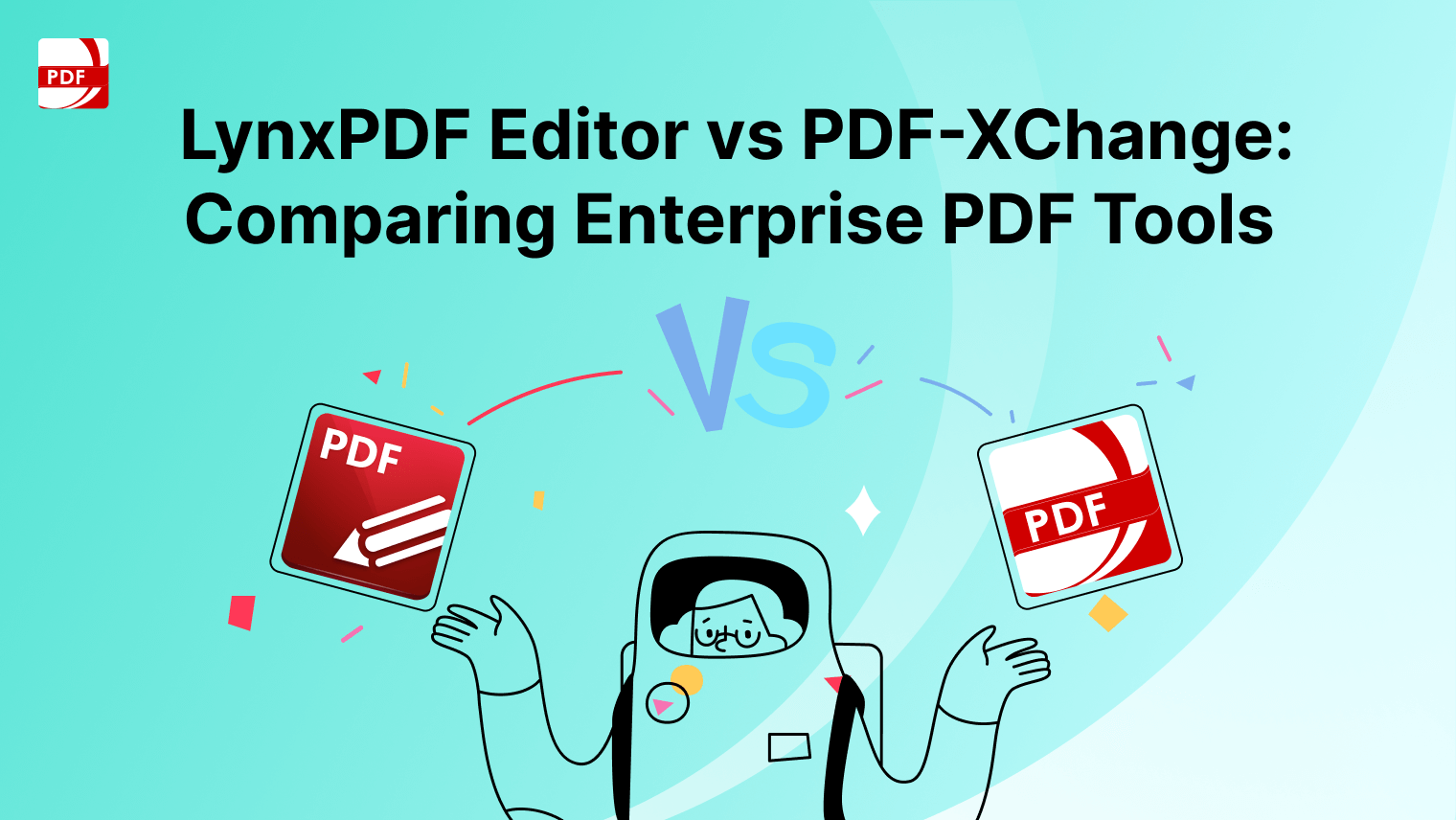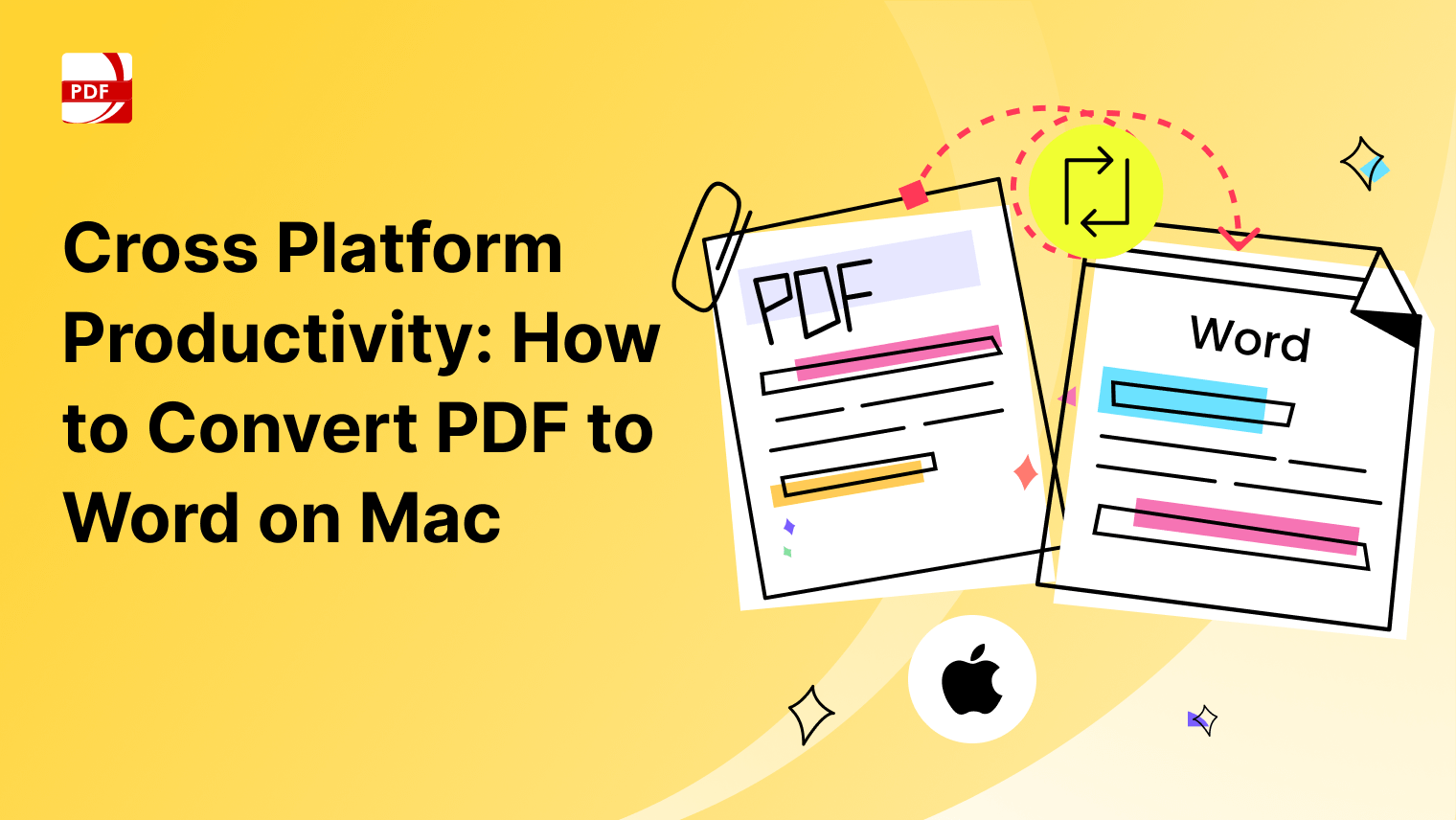Whether you're a professional aiming to impress a client or just looking to save some storage space, mastering the art of manually reducing PDF size can be invaluable.
Dive in with us as we explore simple and effective ways to make your PDFs lighter and more efficient with PDF Reader Pro.
- How to Reduce PDF Size Manually for Windows
- How to Reduce PDF Size Manually for Mac
- How to Delete Unwanted Pages Manually
- How to Reduce PDF File Size Manually
- How to Reduce PDF File Size: Best Practices
- How to Reduce PDF File Size: FAQ
How to Reduce PDF Size Manually for Windows
Let's start with our Windows version of our guide for reducing your PDF's size. See our instructions below!
Navigate, edit, and
convert PDFs like a Pro
with PDF Reader Pro
Easily customize PDFs: Edit text, images,
pages, and annotations with ease.
Advanced PDF conversion: Supports
multi-format document processing with OCR.
Seamless workflow on Mac,
Windows, iOS, and Android.
Step 1: Click Edit PDF
Step 2: Start reducing unnecessary text in your PDF
Right-click any text box you wish to remove and click "Delete"
Step 3: Change text color or reduce font size in the property panel on the right screen
How to Reduce PDF Size Manually for Mac
Dive into our Mac-specific guide on slimming down your PDF files. Follow the steps outlined below!
Navigate, edit, and
convert PDFs like a Pro
with PDF Reader Pro
Easily customize PDFs: Edit text, images,
pages, and annotations with ease.
Advanced PDF conversion: Supports
multi-format document processing with OCR.
Seamless workflow on Mac,
Windows, iOS, and Android.
Step 1: Click on 'Edit PDF'
Step 2: Begin trimming unwanted text from your PDF
Right-click (or control-click) any text box you wish to remove and select "Delete"
Step 3: Adjust text color or decrease font size using the property panel on the right-hand side.
How to Delete Unwanted Pages Manually
Removing unnecessary pages in your PDF can also reduce the size of your PDF. You need to consider whether you need every page of your PDF. You may have unnecessary pages because of too many blank spaces.
You may also shorten your content, which will result in blank pages.
Follow these steps to delete those pages:
1. Open your PDF file with PDF Reader Pro;
2. Click Page Edit;
3. Select pages you want to delete;
4. Click OK.
How to Reduce PDF File Size Manually
Just as practical as the previous two steps, you can also reduce the size of your PDF manually using our compression tools. PDF Reader Pro offers compression tools that have a clean and simple interface that is easy for novice users to understand.
In addition, PDF Reader Pro provides several options that give you the freedom to decide how much you want to reduce the size of your PDF.
PDF Reader Pro also provides compressing files in batches so you can compress multiple files in one go:
1. Open your PDF file with PDF Reader Pro;
2. Press Editor on the top panel;
3. Add files if you want to compress files in batches;
4. Choose the Optimization Options;
5. Click Compress;
6. Select where you want to save your files and press OK.
How to Reduce PDF File Size: Best Practices
Managing the size of a PDF file is often a necessity, especially when sharing, uploading, or simply conserving storage space. A smaller PDF size ensures efficient data storage and faster transmission.
Whether it's for business or personal use, reducing the file size of a PDF document can be a game-changer. Below are some of the best practices to achieve this:
-
Understand File Size and Its Implications: Before diving in, it's essential to understand the original PDF file size and how it affects storage and sharing. A larger file size often means the PDF contains high-quality images, embedded fonts, or other media elements, which may be unnecessary for certain uses.
-
Adjust Image Quality: One of the primary culprits behind a bloated PDF file is the quality of images it contains. By optimizing and reducing the image quality, you can drastically reduce the overall PDF size. However, ensure you strike a balance to avoid compromising the readability or visual appeal of the PDF document.
-
Leverage Online Tools: Numerous online services and online PDF compressors are available to help you reduce your PDF file size. These online tools offer varying compression levels, allowing you to choose the optimal balance between size and quality. While some may be wary of uploading sensitive information to an online tool, many reputable online services ensure data privacy and delete your files shortly after processing.
-
Check Compression Levels: Not all compression tools are made equal. While using any PDF compressor, be it a software or an online service, always check the compression levels. Higher compression will reduce the file size but may degrade the quality of images and text. Choose a level that maintains the readability and integrity of your content.
-
Audit Space Usage: Certain tools allow you to audit space usage within your PDF. This feature helps you identify what elements—like images, fonts, or media—are taking up the most space. Once identified, you can make informed decisions about what to keep, modify, or remove.
-
Beware of File Size Limits and Types: Some platforms or email services have file size limits, and it's essential to be aware of these when compressing. Additionally, always ensure the compressed PDF file remains compatible with common readers and avoids version compatibility issues.
-
Avoid Over-relying on a Single Solution: While it might be tempting to stick to one compression tool or online service, diversifying your methods can lead to better results. Different tools might offer different compression algorithms, benefits, and features.
-
Always Save a Backup: Before making any changes, ensure you have a copy of your original PDF file. This ensures that you can revert to the original if needed, especially if the compressed version doesn't meet your expectations.
-
Evaluate Storage Options: Once your PDF is optimized, consider storing it in a cloud service or other secure storage solutions. This not only ensures accessibility but also conserves local storage space.
You can also explore our tips on How to Make a PDF Smaller.
By employing these best practices, you can effectively manage and reduce your PDF size, ensuring smoother operations and efficient data handling.
Tailored Academic Journey: Personalized Learning Plan with PDF Reader
Unlocking personalized education with ease and precision.
How to Reduce PDF File Size: FAQ
What is the Compression Process?
The compression process involves reducing the size of a PDF file by using algorithms to minimize the amount of data needed to represent the file content. This is achieved by removing duplicate files, optimizing image file formats, and eliminating unwanted objects, among other methods. It's vital, however, to balance file size reduction with file quality to avoid excessive quality loss.
What is Advanced Optimization?
Advanced optimization is a feature for PDF file reduction that offers more granular control over the elements within a PDF. Users can choose specific elements, like alternate images or certain file attachments, and determine how these are processed to achieve the best balance between file size and quality.
Do I Need an Internet Connection for Online PDF Compression Tools?
Yes, to utilize online PDF compression tools or any online PDF compressor tool, an active internet connection is required. This is because the PDF file online is uploaded to a server where the compression occurs, after which you can download the optimized file.
How Do I Use a Drop-Down Menu in an Online Compression Tool?
Most online PDF compression tools will have intuitive user interfaces. Typically, a drop-down menu will provide various options for compression levels, file quality, and more. Simply select your preferred settings from the menu, and the tool will apply them during the compression process.
Can I Get Unlimited Access to an Online PDF Compressor Tool?
While some online tools offer unlimited access for free, others may have restrictions based on the number of files, the total size, or a time frame. It's recommended to review the terms of service or details provided by the online tool to understand any limitations.
Are There Concerns About File Security with Online Tools?
Absolutely. While many reputable online PDF compression tools prioritize user security, ensuring encrypted uploads and deleting your PDF files after a certain period, it's crucial to always read the privacy policies and terms of use. This will give you an understanding of how your data is handled.
Does Reducing the PDF Format Lead to Quality Loss?
Compression can lead to quality loss, especially if aggressive compression settings are chosen. However, many modern tools allow for efficient file size reduction with minimal noticeable quality degradation. It's always advisable to keep a copy of the original file to compare against the compressed version.
How Do I Handle Email File Size Limits with Large PDFs?
If a PDF exceeds email file size limits, you can utilize online PDF compression tools to reduce its size. Another option is to split the PDF into smaller sections or use a digital file format with better compression properties. If email isn't mandatory, consider using cloud services to share a link to the file instead.
Who Can I Consult for Further Guidance?
For expert insights or specific questions about PDF optimization, reaching out to a staff writer or expert in the field of digital documents can be helpful. They can provide in-depth knowledge and tips on how best to manage your PDFs.
By understanding these frequently asked questions, you'll be better equipped to make the most of your PDFs while ensuring their quality and security.


